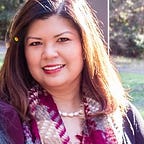(Part 3 of Surgery in the Time of Pandemic: A Personal Account in Four Parts)
Part 3: Narcotics
“How is your pain level?”
This became the most asked question my entire hospital stay. “Have you been able to pass gas?” came in a close second. Never did I imagine I would feel such pride in openly admitting that yes, I’m passing gas! With a huge smile on my face, no less. As if I was in the running for the top distinction of “Most Burps and Farts” in the entire patient wing.
The first couple of times I was asked to rate my pain, I was momentarily confused because I realized I felt no pain at all. For a brief second, I considered saying “one” instead of “zero” so I wouldn’t sound like a weirdo. I happen to have a relatively high pain tolerance (part of why I end up in medical situations like this is I tend to ignore seemingly minor symptoms), but I expected to be dealing with some pain.
Well. Let me tell you why I had zero pain in the first 36 hours. I was aware that my epidural was going to stay intact for at least two days, as they assess my pain levels before transitioning me to oral pain medication. The reason I wasn’t feeling any pain was not because I was a badass at pain management. It was because my epidural drip contained fentanyl. Fentanyl, which is described on the DEA.gov website as “a synthetic opioid that is 80–100 times stronger than morphine”. Holy Breaking Bad, Batman!
As much as it was nice not to feel any pain, my body had some trouble handling the strong narcotic. I was dizzy, nauseated, and vomiting intermittently from the time I settled into my room. Ice chips and anti-nausea meds helped, but only briefly. The next morning, housekeeping came by to clean my room and bathroom. One of them set me up in a comfortable chair so I could eat while he changed my bed linens. He was supposed to take me for a short walk around the nurse’s station after lunch but I was so woozy that even small sips of liquid made me throw up. I must have gone through five eme-bags those first two days (don’t worry, they were the biodegradable kind so I still managed to be eco-friendly while throwing up juice; and water; and broth; and everything else in my full liquid diet). My blood pressure dipped, which was not typical for me.
After three barely touched meals, I was starting to feel weak. So when the anesthesiologist on staff (who was managing my pain) came by on Day Two, I eventually persuaded him to take me off fentanyl. He switched me to an epidural drip for local pain control but only after warning me that I was now going to feel the pain, especially when I walk. That’s when I realized that much as I can tolerate pain, I cannot tolerate not eating. It was worth it when I finally managed to eat (and keep down) dinner.
The next day I also successfully convinced my oncology resident and the anesthesiologist to wean me off the epidural and transition me to oral pain medication so that I could go home soon. I had already taken a few walks on the floor with a nurse and the pain was manageable. Another nurse noticed that I wasn’t watching anything on the TV. I guess I didn’t think listening to the news would be beneficial for my healing. I preferred to spend my quiet time either reading or meditating. On my last night at the hospital, I was happy to join a virtual sound bath that my reiki healer had scheduled through Instagram Live. I’m somewhat new to receiving reiki but the visions and messages I receive in each session have been extremely relevant and helpful to my journey. And quite uncanny. But that is a story for another day.
Although I felt secure in my little section of that hospital floor, it was hard not to wonder what was going on in the rest of the facility, especially in the ICU, where I knew most of the critical COVID-19 patients were being treated. My heart sank whenever someone announced a code blue. It was also hard not to overhear the occasional nurse chatter when my door was open. With the constantly changing situation, alarming news media, and often conflicting advice concerning masks, I couldn’t imagine how nerve-wracking it was for healthcare workers engaged in direct patient care. Like everyone else, they have their own concerns about ensuring their protection and the safety of their families. Late one night I heard a nurse explain her routine upon arriving home from work. She had very young children and needed to be extremely careful. Her whole family knew that she needed to disinfect everything and take a shower before coming into contact with any of them. With each nurse shift change, I always made sure to sincerely thank my nurses, wish them continued safety, and pray for their protection. As I think about the many doctors, nurses, and staff who took care of me during my 4-day stay, I truly hope that they are all safe and healthy.
